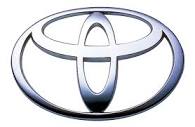Camry V6-3.5L (2GR-FE) (2008)
/Page-514001.png)
Refrigerant: Service and Repair
AIR CONDITIONING: REFRIGERANT: REPLACEMENT
REPLACEMENT
1. RECOVER REFRIGERANT FROM REFRIGERATION SYSTEM
(a) Start up the engine.
(b) Turn the A/C switch on.
(c) Operate the cooler compressor at an engine speed of approximately 1,000 rpm for 5 to 6 minutes to circulate the refrigerant. This causes most
of the compressor oil from the various components of the A/C system to collect in the A/C compressor.
(d) Stop the engine.
(e) Recover the refrigerant from the A/C system using a refrigerant recovery unit.
2. CHARGE WITH REFRIGERANT
(a) Perform vacuum purging using a vacuum pump.
(b) Charge with refrigerant HFC-134a (R134a).
Standard:
450 to 550 g (15.9 to 19.4 oz.)
SST: 07110-58060
07117-58060
07117-58070
07117-58080
07117-58090
07117-78050
07117-88060
07117-88070
07117-88080
NOTICE:
-
Do not turn the A/C on before charging with refrigerant. Doing so will cause the cooler compressor to work without refrigerant, resulting in
overheating of the cooler compressor.
-
Approximately 100 g (3.53 oz.) of refrigerant may need to be charged after bubbles disappear.
The refrigerant amount should be checked by quantity, not with the sight glass.
HINT: Ensure that sufficient refrigerant is available to recharge the system when using a refrigerant recovery unit. Refrigerant recovery units
are not always able to recover 100 % of the refrigerant from an A/C system.
3. WARM UP ENGINE
(a) Keep the A/C switch on for at least 2 minutes to warm up the compressor.
NOTE: Be sure to warm up the compressor when turning the A/C on after removing and installing the cooler refrigerant lines (including the
compressor), to prevent damage to the compressor.
4. CHECK FOR LEAKAGE OF REFRIGERANT
(a) After recharging with refrigerant gas, check for leakage of refrigerant gas using a halogen leak detector.
(b) Carry out the test under the following conditions:
-
IG OFF
-
Secure good ventilation (the gas leak detector may react to volatile gases which are not refrigerant, such as evaporated gasoline and
